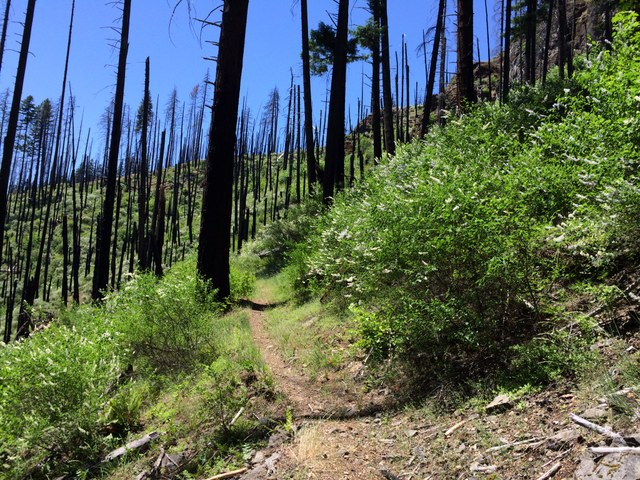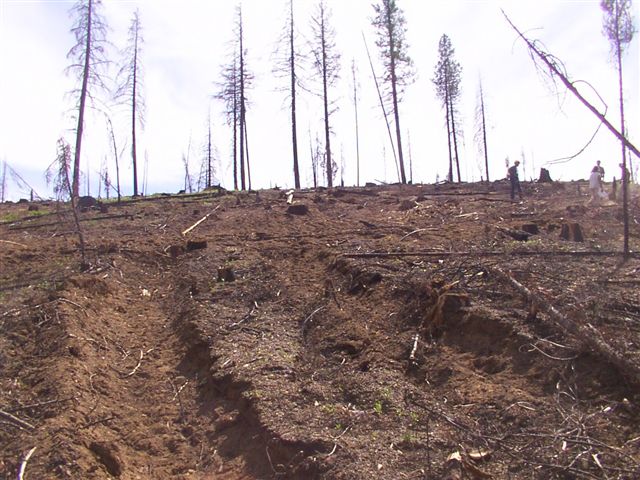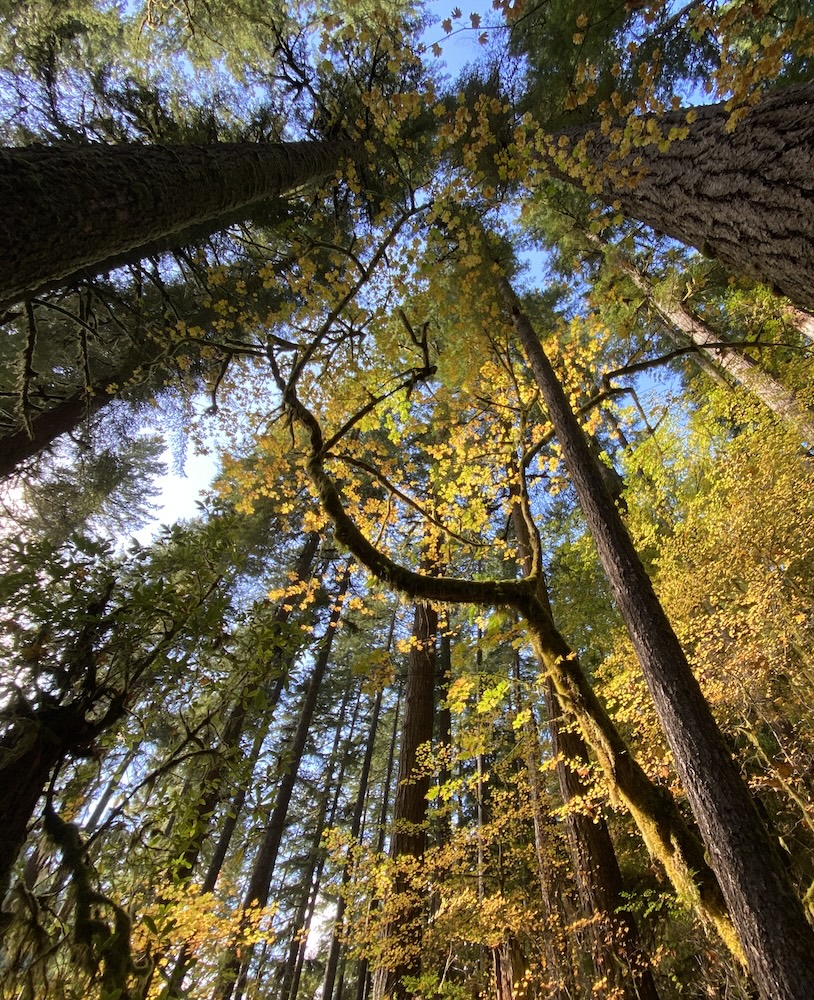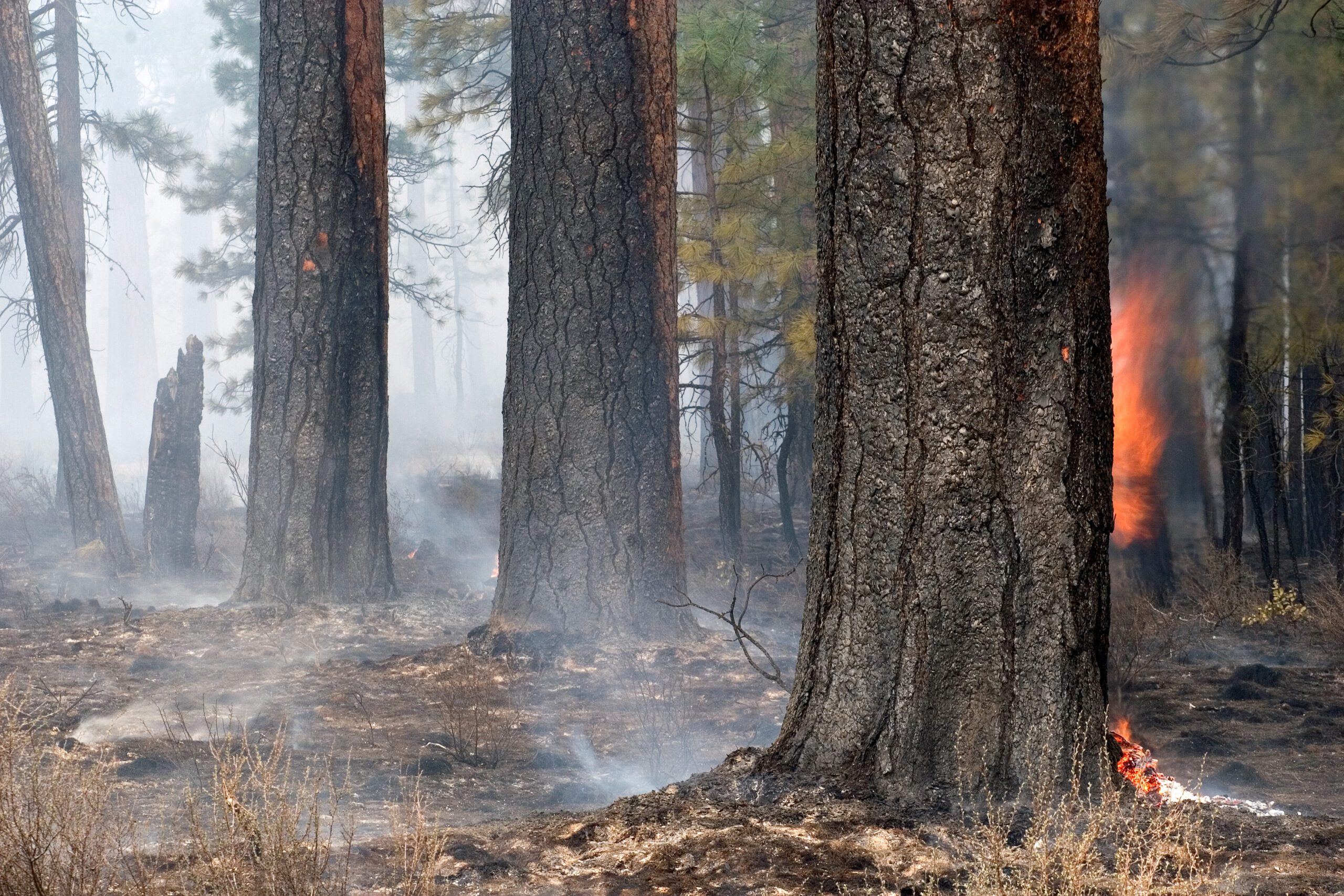For as long as there have been trees in Oregon, fire has been a part of our forests. Humans tend to see forest fires as a destructive force, but fire is a key process that represents a way that nature renews itself and shapes our living landscapes.
Fire Ecology 101
For as long as there have been trees in Oregon, fire has been part of our forests. Historically, different forest types and climates in Oregon have experienced different fire regimes. In some forests, fire tends to burn infrequently and more severely, while other forests tend to burn more frequently and less severely—and everything in between. The fire regime in a moister forest type and climate like the Coast Range, for example, would likely recur at a long interval of a few hundred years but at a high severity where many of the trees would die. In a dry ponderosa pine forest, we would expect fire frequency to be much higher—every five to fifteen years—but fires would be less severe, mostly killing small trees along the ground.
While different regions and forest types evolved with different fire regimes, individual tree species are also adapted to fire in different ways. Some species, such as ponderosa pine, evolved to be tolerant of fire. These trees have thick bark to protect their cambium (the living layer of a tree just under the bark) from the frequent, generally low-intensity fires that tend to burn in the dry ponderosa pine forest type. Other species like lodgepole pine have adapted to unlock their cones to release seeds after a fire to quickly begin the process of regrowth. With thick bark and a love of growing in sunny, open areas, Douglas-fir trees, though often found in moister forest types that don’t experience fire often, are also well-adapted to fire. In an ancient Douglas-fir forest, the biggest, oldest trees often have blackened bark near their base, showing that they lived through a fire, while tree species typically found in moister environments or at higher elevations might not have such adaptations and tend to perish in a high-severity fire.
While fire does kill trees—sometimes just a few and sometimes vast landscapes depending on the severity and intensity of the fire—it also has a rejuvenating effect on forests. The trees that die in a fire are recycled naturally as snags and down logs, stabilizing and enriching the soil and providing much-needed habitat for species like woodpeckers, bluebirds, and bats that depend on abundant dead trees. Fires reset the understory where it may have grown very dense, allowing different species to thrive in burned patches.
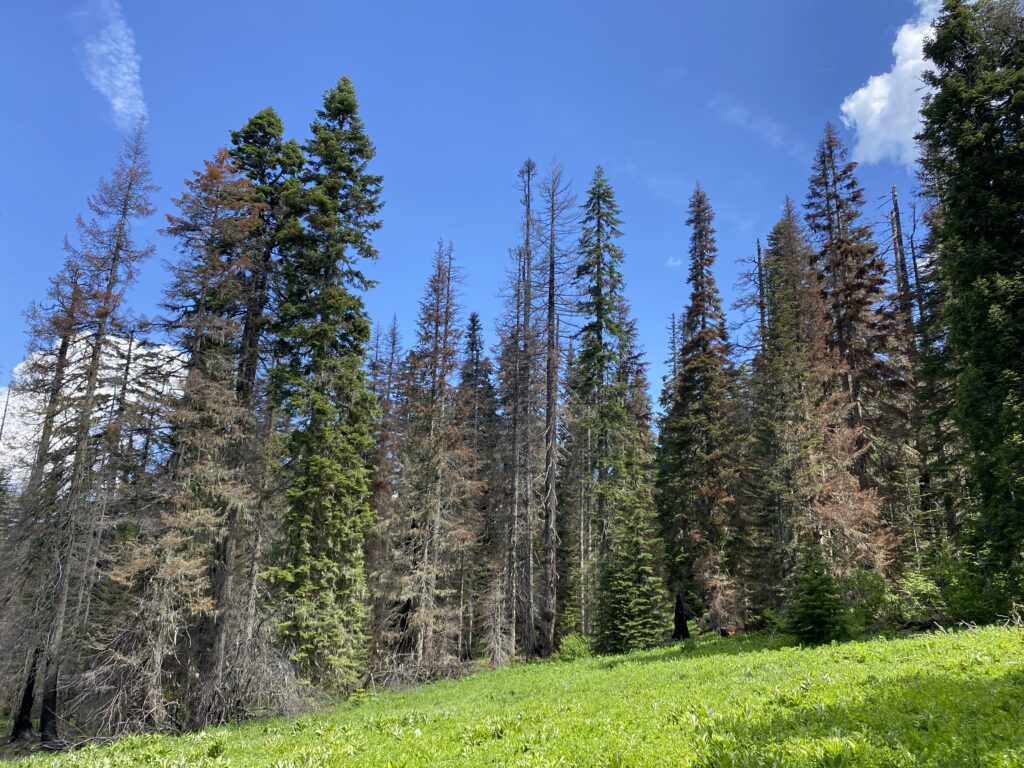
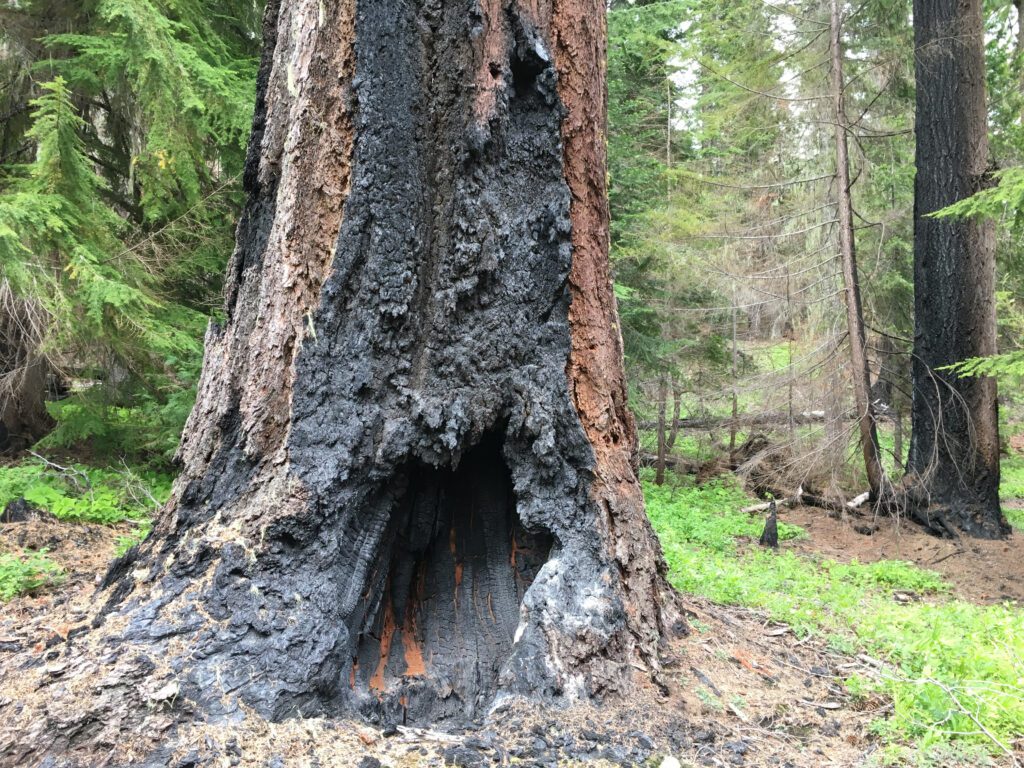
Find out more about what Oregonians should know about forest fires.
Managing fire in forests and around communities
Unfortunately, a century of logging that removed the largest and most fire resistant trees, and misguided efforts to prevent all fire everywhere, have degraded our forests and led to a serious buildup of fuels and dense undergrowth in many areas–which can lead to unnaturally hot and destructive fires, putting our forests at risk. Oregon Wild believes it is important that we find ways to restore the role of fire in our forests without compounding the damage that has already been done.
To have thriving forest ecosystems, fire needs to be both tolerated in and restored to its natural role. In dry forests in southwest, central, and eastern Oregon, efforts to restore a more natural, more frequent fire regime include removing small fuels that have grown in as a result of fire exclusion, using controlled fires to reduce fuels, and making homes and communities more fire-resilient so they are not threatened by natural processes like fire. These treatments can help forests that have been thrown out of whack by grazing, logging, and fire exclusion to attain a more natural vegetation condition and become more resilient to natural fires. They can also help keep communities safe from uncharacteristic fires.
In moister climates, like western Oregon’s Douglas-fir and hemlock forests or in the moist mixed conifer forests of the Blue Mountains, it can make sense to reduce fuels only if fire exclusion and suppression have significantly altered the natural fire regime and if large trees and other fire-resilient structures are not removed. Community and home adaptation and preparedness is also important as climate-driven weather events and drought bring more frequent fires to our doorstep, as it did over the past few years in western Oregon.
“Salvage” logging
One of the most damaging ways humans have reacted to fire is to rush to remove trees from burned landscapes in post-fire logging operations (also known as “salvage logging”). This stems from the misguided belief that burned trees would “go to waste” – but in nature, there is no waste. Dead trees are recycled naturally – stabilizing and enriching the soil, and providing much-needed habitat for species that depend on abundant dead trees (such as woodpeckers, bluebirds, and bats to name a few).
This management practice destroys valuable snags and down wood structure and kills young seedlings and sprouts just as they are emerging, while replanting displaces diverse native vegetation with conifer monocultures. The logging and associated road building also harms sensitive soils. These actions, standard practice for decades in most of our forested landscape, means that naturally recovering postfire forests are now rare.
